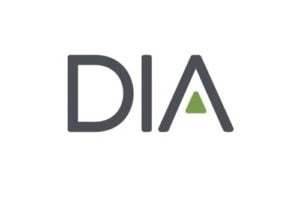In late 2023, The Wall Street Journal published the article Generic Drugs Should Be Cheap, but Insurers Are Charging Thousands of Dollars for Them. This article examined interactions between patient health insurance prescription benefits, pharmacies, and pharmacy benefit managers (PBMs), and their collective impact on the prices that patients pay for their prescription drugs in the United States.
As part of the DIA Global Forum February 2024 edition, former DIA Global Head of Science and Scientific Strategy Courtney Granville discussed this article and the topics it raises with Parexel market access experts Brian Duda and Wyatt Gotbetter.
DIA: Wyatt, would you highlight some of the key points of this article for our listeners who may not be familiar with it?
Wyatt Gotbetter: The Wall Street Journal highlighted some interesting pricing differences on two generic drugs, one for cancers with a broad label and the other for multiple sclerosis. They pointed out that, although these drugs were generic and we presume would be relatively inexpensive for patients, there were huge price differences if you looked across different channels. For example, some patients who could access these drugs through their pharmacy benefit manager (PBM) like Caremark or Express Scripts were paying quite a bit more out-of-pocket, even with their insurance benefits, than individuals who went to the pharmacy and paid “full retail” for their prescription at the generic price or perhaps used one of these more innovative discounting services like GoodRx or Cost Plus.
The Wall Street Journal tried to highlight: Why were some people being serviced by these very large pharmacy benefit entities, using their costly insurance plans, still paying more? The article takes you through a complicated chain that explains the pharmacy benefit manager (PBM) industry. Part of what they put forth in their article is that (retail pharmacy chain) CVS, for example, might have been directing prescriptions to their own pharmacy network and charging higher prices.
This is increasingly a focus of debate and legislation across many venues and jurisdictions: “Are pharmacy benefit managers fulfilling their original mission of offering members and employers (who pay for healthcare for many of us) the lowest prices and offering consumers the lowest out-of-pocket costs?” Or are there in fact several different mechanisms, such as rebates and administrative fees, that actually result in higher costs for consumers and higher profits for the PBMs and dispensing pharmacies?
DIA: Brian, could you explain the background of the pharmacy benefit manager (PBM) in the US healthcare system and how that role has evolved?
Brian Duda: PBMs are third-party administrators of prescription drug programs. They negotiate discounts in the form of rebates with drug manufacturers, negotiate dispensing fees with pharmacies, and process prescription drug claims on behalf of insurers. PBMs emerged in the late 1980s as administrators processing prescriptions for insurers. By the 1990s, PBMs became a major force in the healthcare and prescription drug markets, expanded their services and their influence. PBMs also evolved quite extensively because of several mergers and acquisitions within healthcare insurers such as Cigna, Aetna, and United Healthcare, all intent on providing a vertically integrated healthcare system.
Today, PBMs manage pharmacy benefits for about 266 million Americans. The top three PBMs—CVS Caremark, Express Scripts, and Optum Rx—comprise about 78% of the total pharmacy market. While PBMs have been credited with reducing drug costs, improving access, and promoting innovation, they’ve also faced growing criticism for a lack of transparency, conflicts of interest, and anticompetitive practices. Some of that is also highlighted in this article.
WG: If one looks at these three large entities who have overwhelming market share, it’s important to note this point from Brian: CVS is the largest pharmacy chain in the US, but they also own health insurer Aetna. Express Scripts recently joined health insurer Cigna, and Optum is owned by health insurer United Healthcare. While these PBMs may not always exclusively serve the members of those health plans (they may work with other insurers), the very high market share that they collectively hold does give them a great deal of market power. If you look at the economics of these firms, they have either retained the majority of these rebates or not fully passed along all the discounts to the health plan sponsor. Ideally, they would be driving down the cost of drugs through negotiations to lower costs for the end user. But their business model has relied upon retaining these rebates.
PBMs also offer other important services such as developing and managing formularies, efficiently and conveniently shipping drugs to a patient’s home, or training patients in the proper use of drugs, especially those that might require self-injection. But the article also calls out why some newer business models, such as GoodRx and Cost Plus, can help consumers get drugs at an even lower cost, despite their small market share. Interestingly, in the wake of this WSJ article and political and media scrutiny of PBMs and rebating practices, both Express Scripts and Caremark have announced new benefit plans that emulate Cost Plus in that they claim to provide a transparent system of markups and fees.



